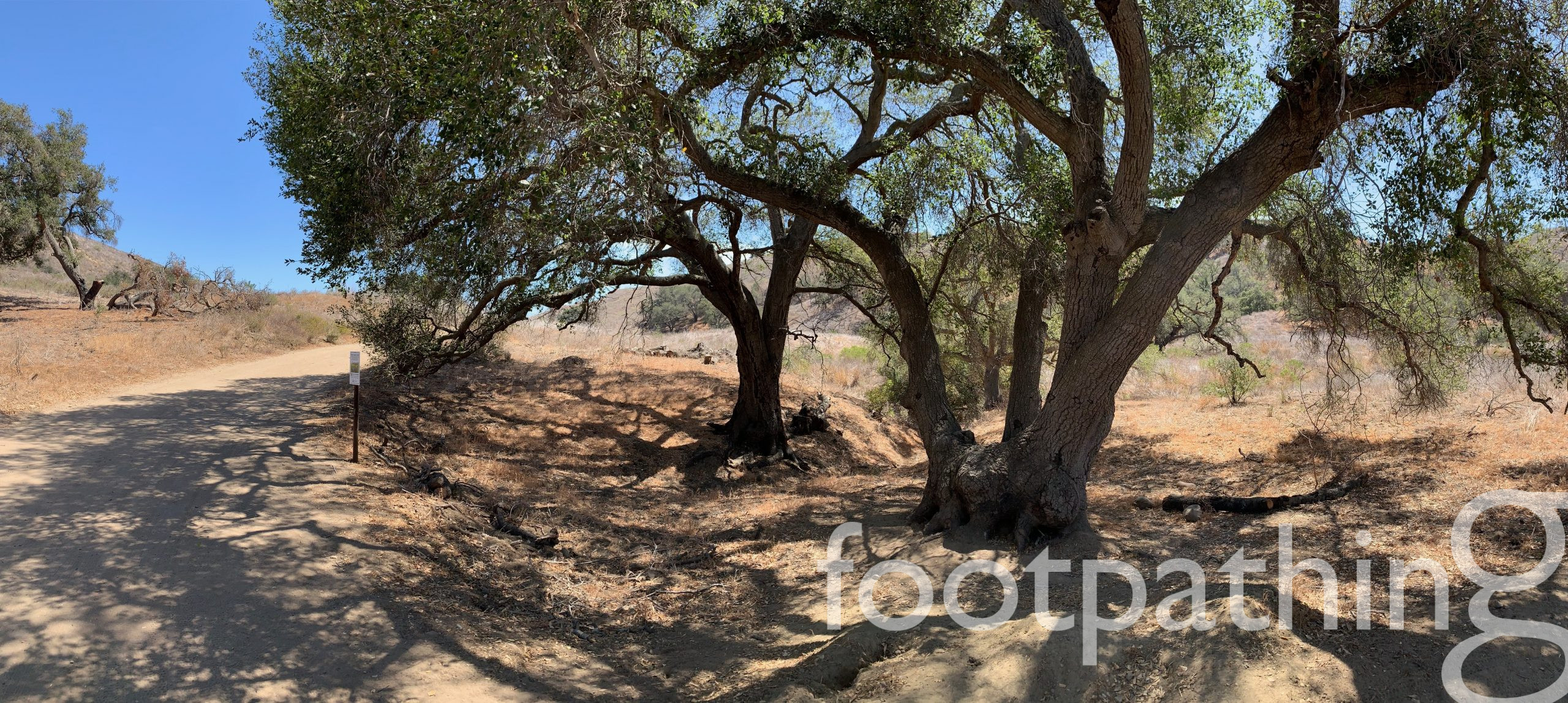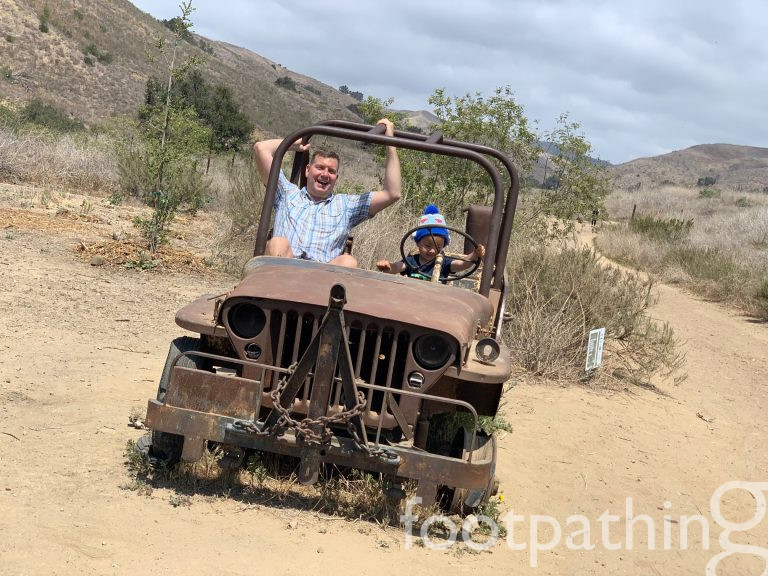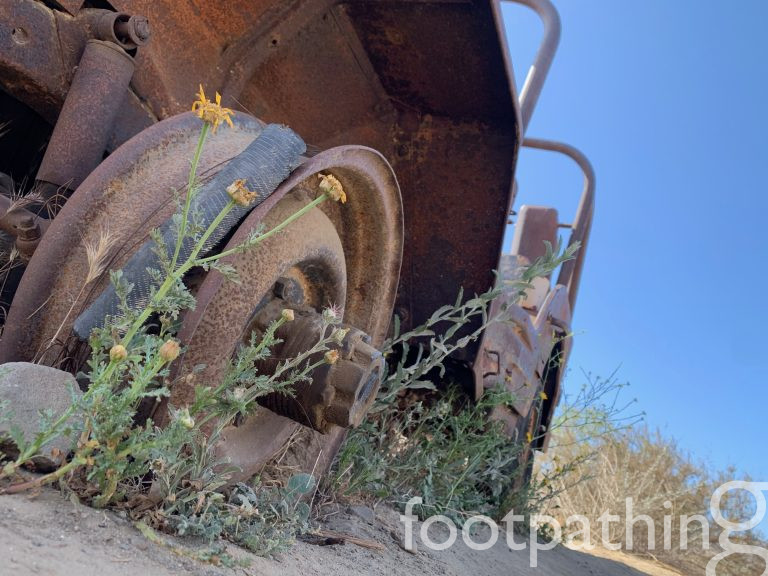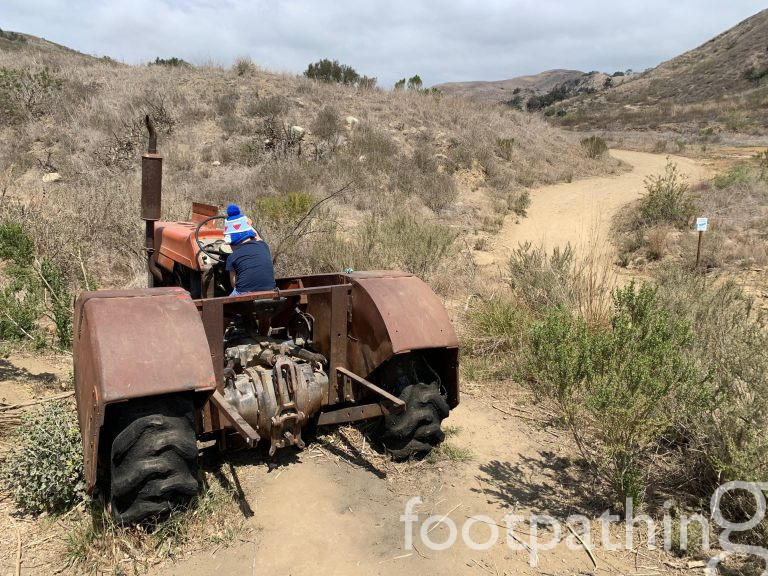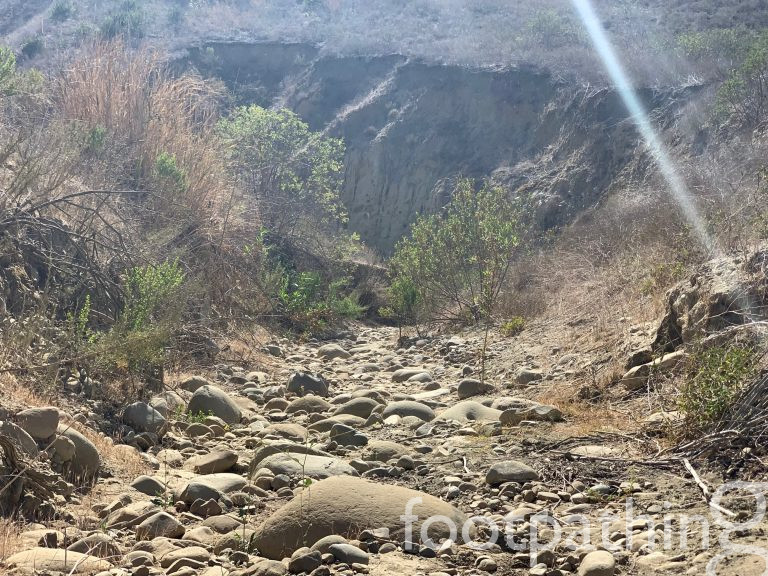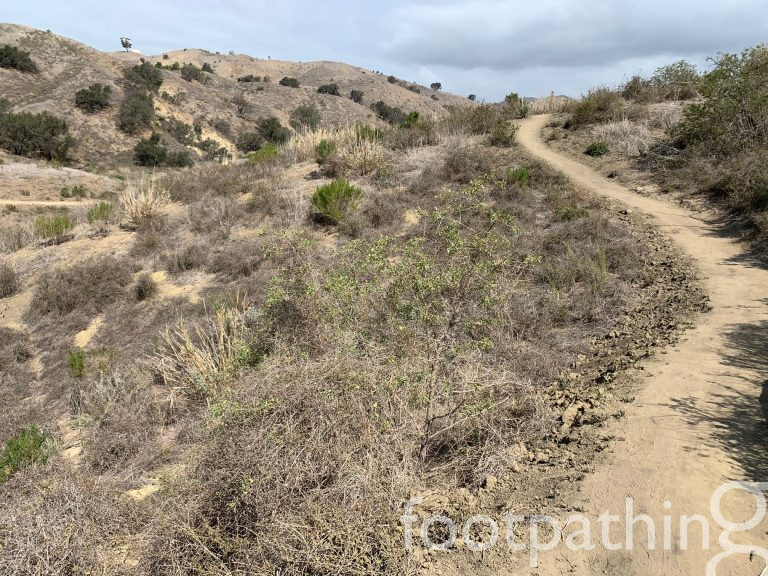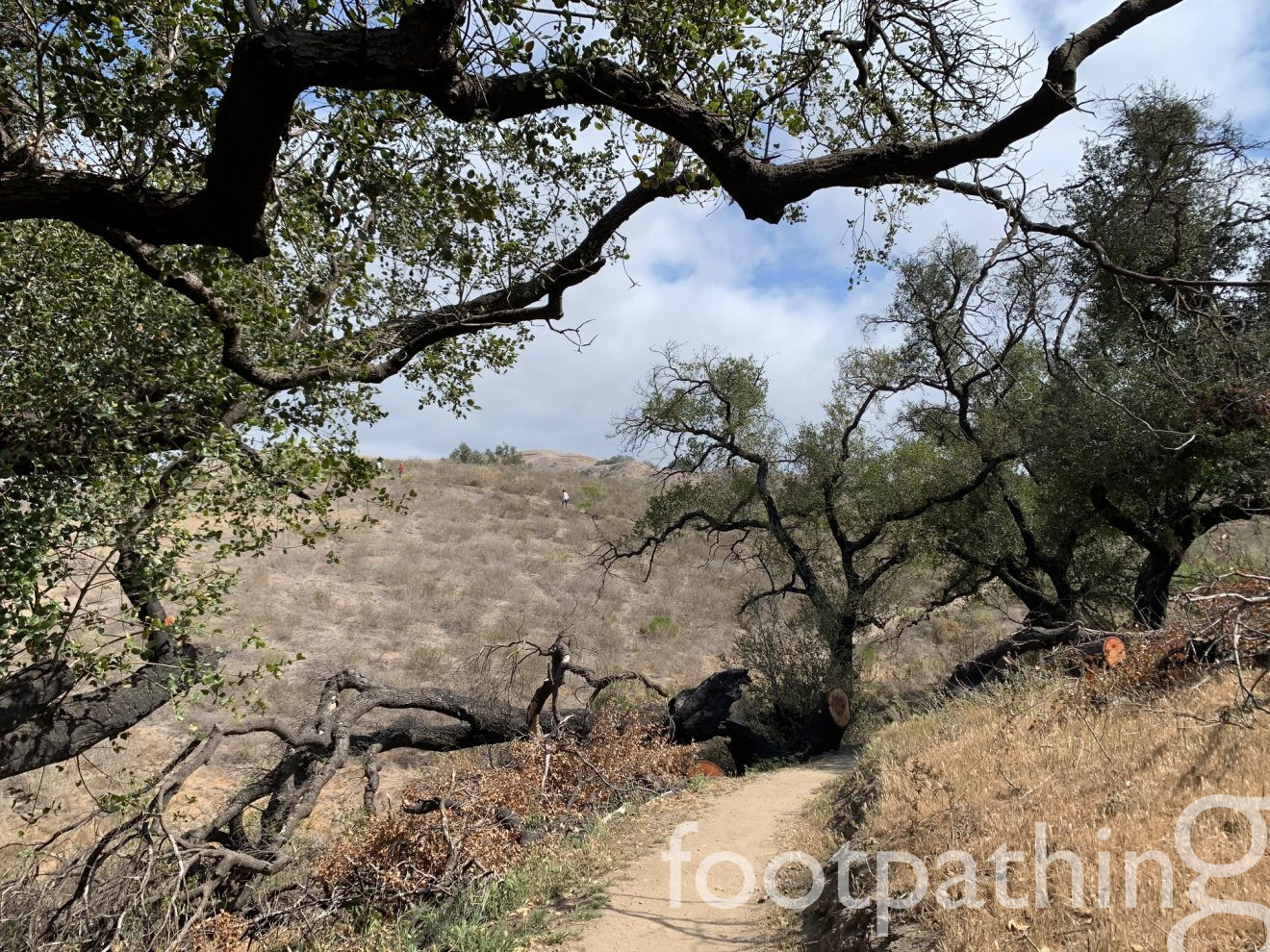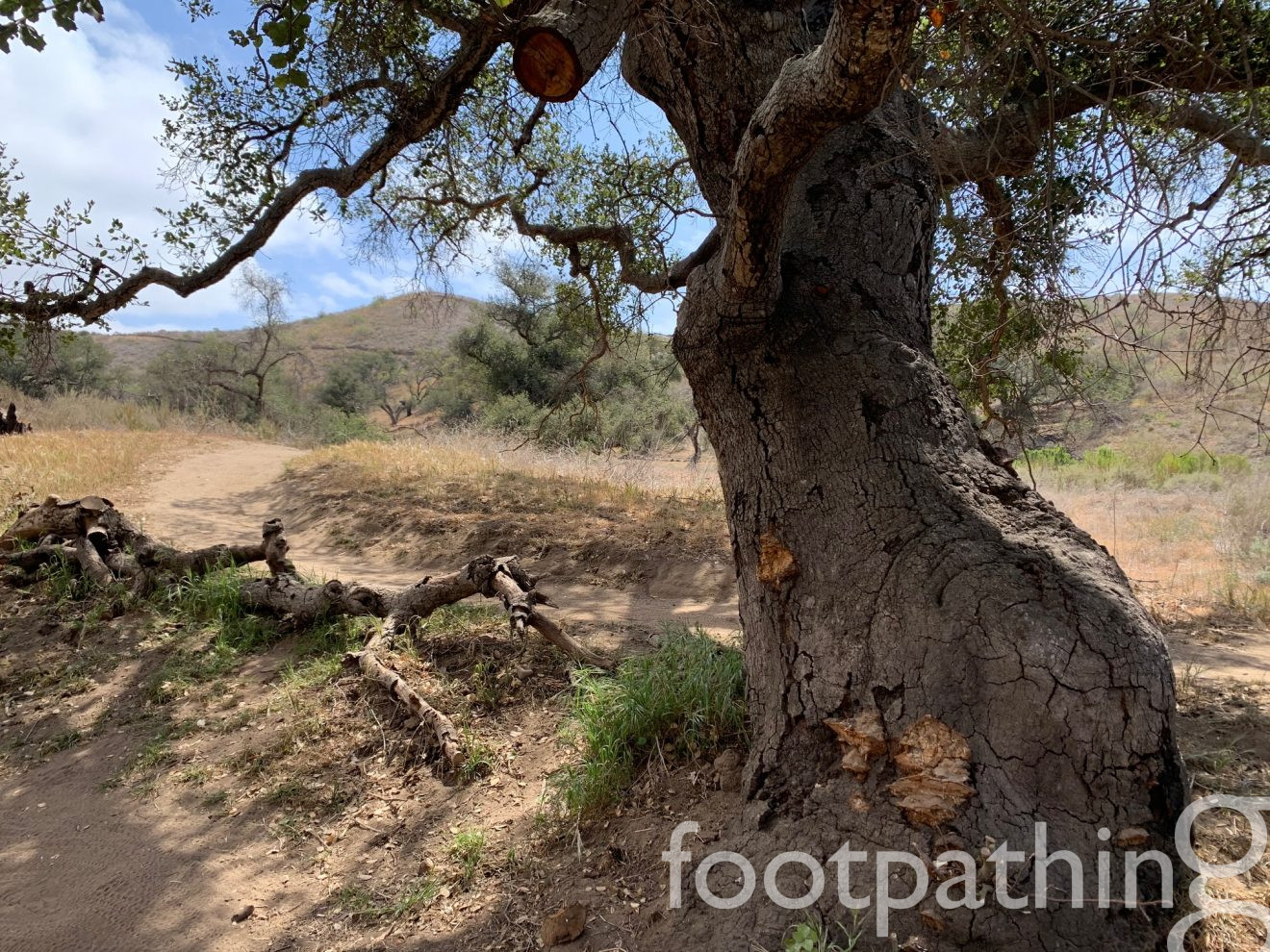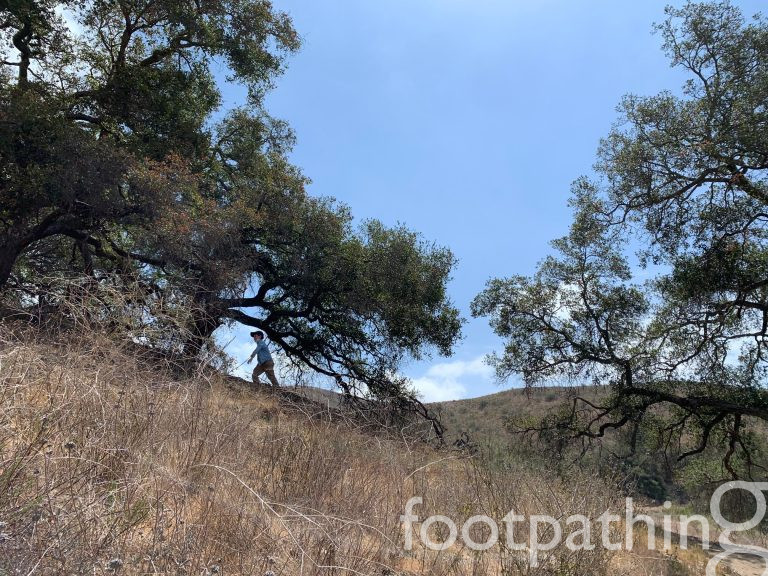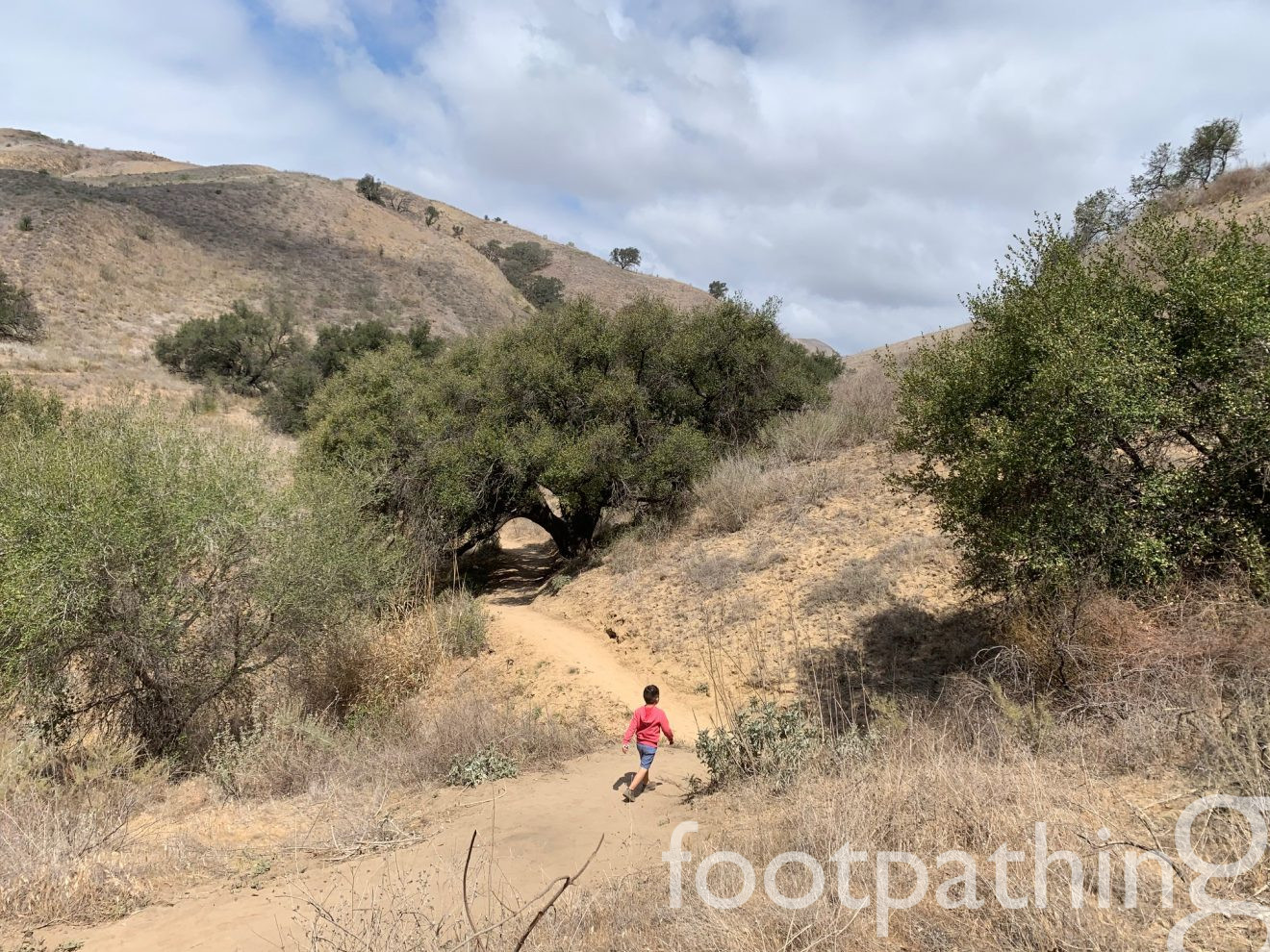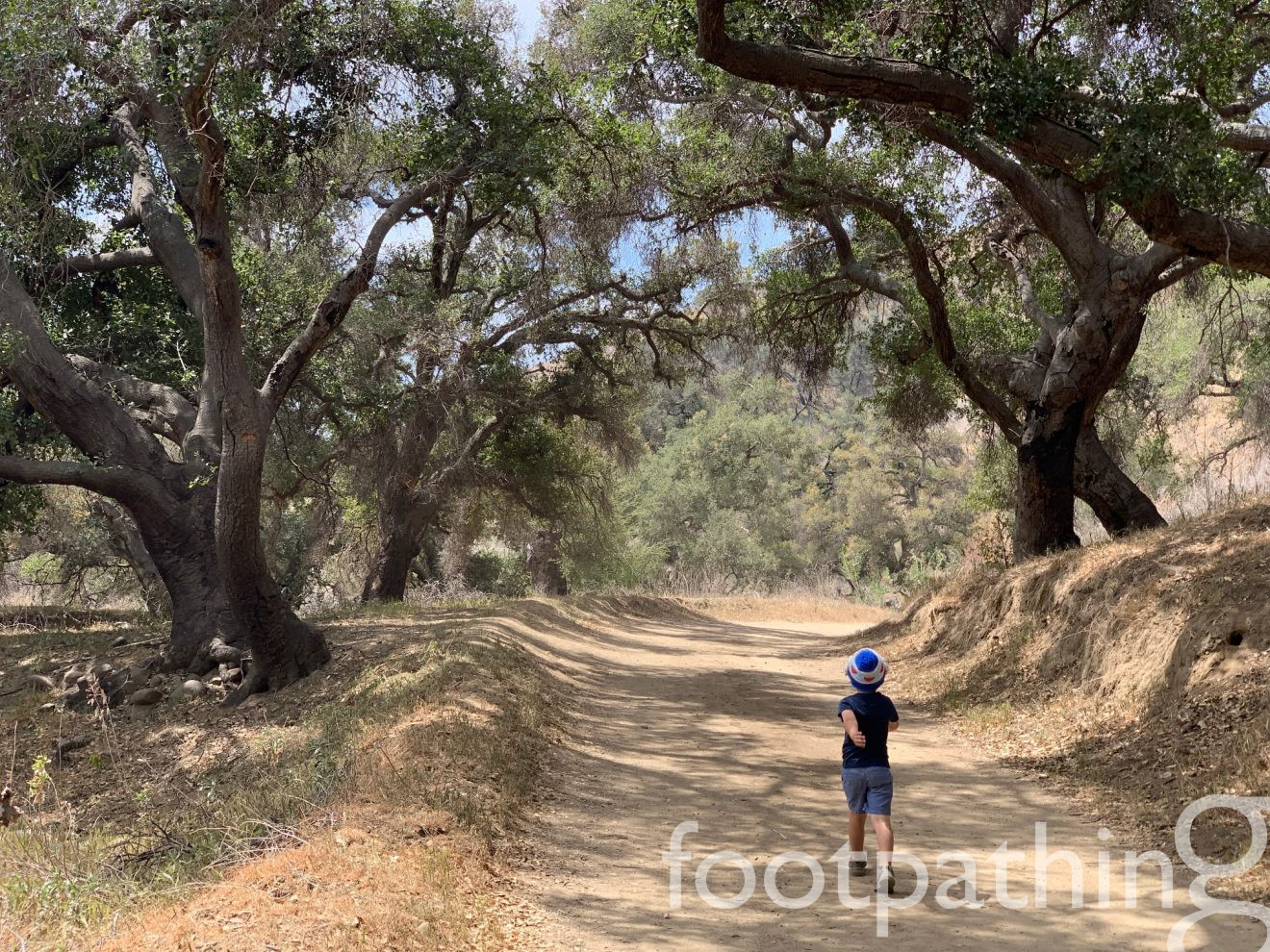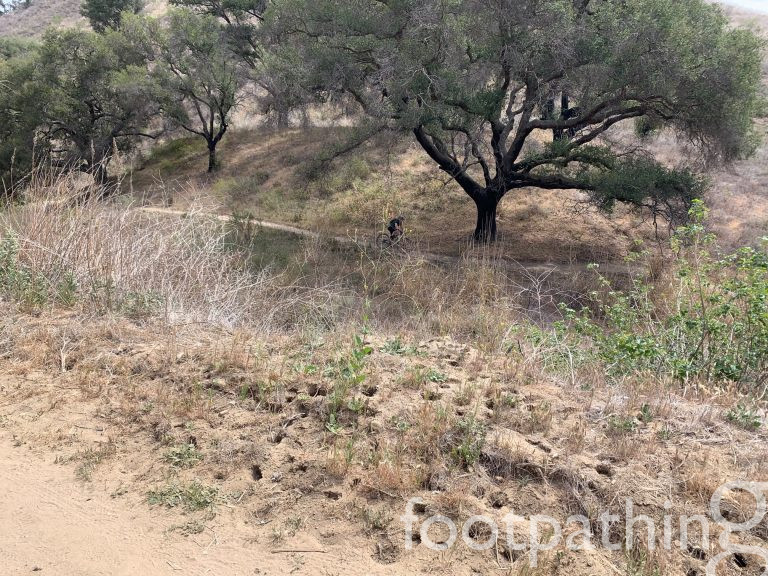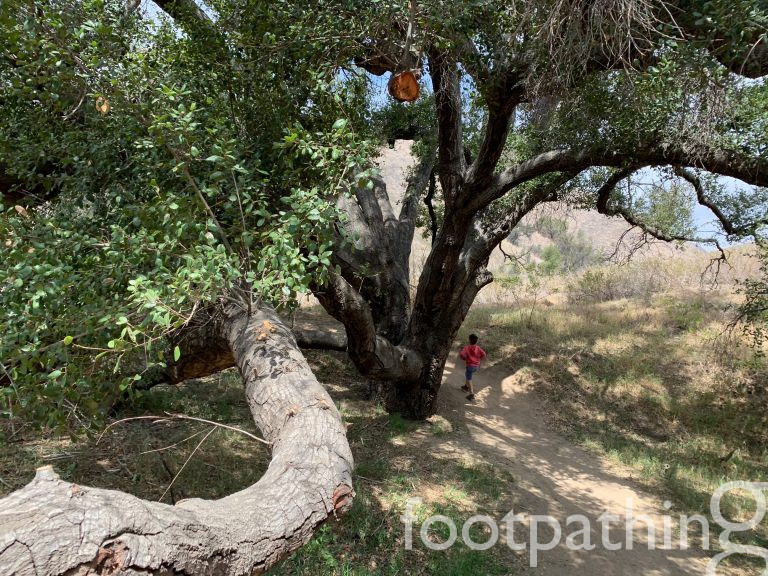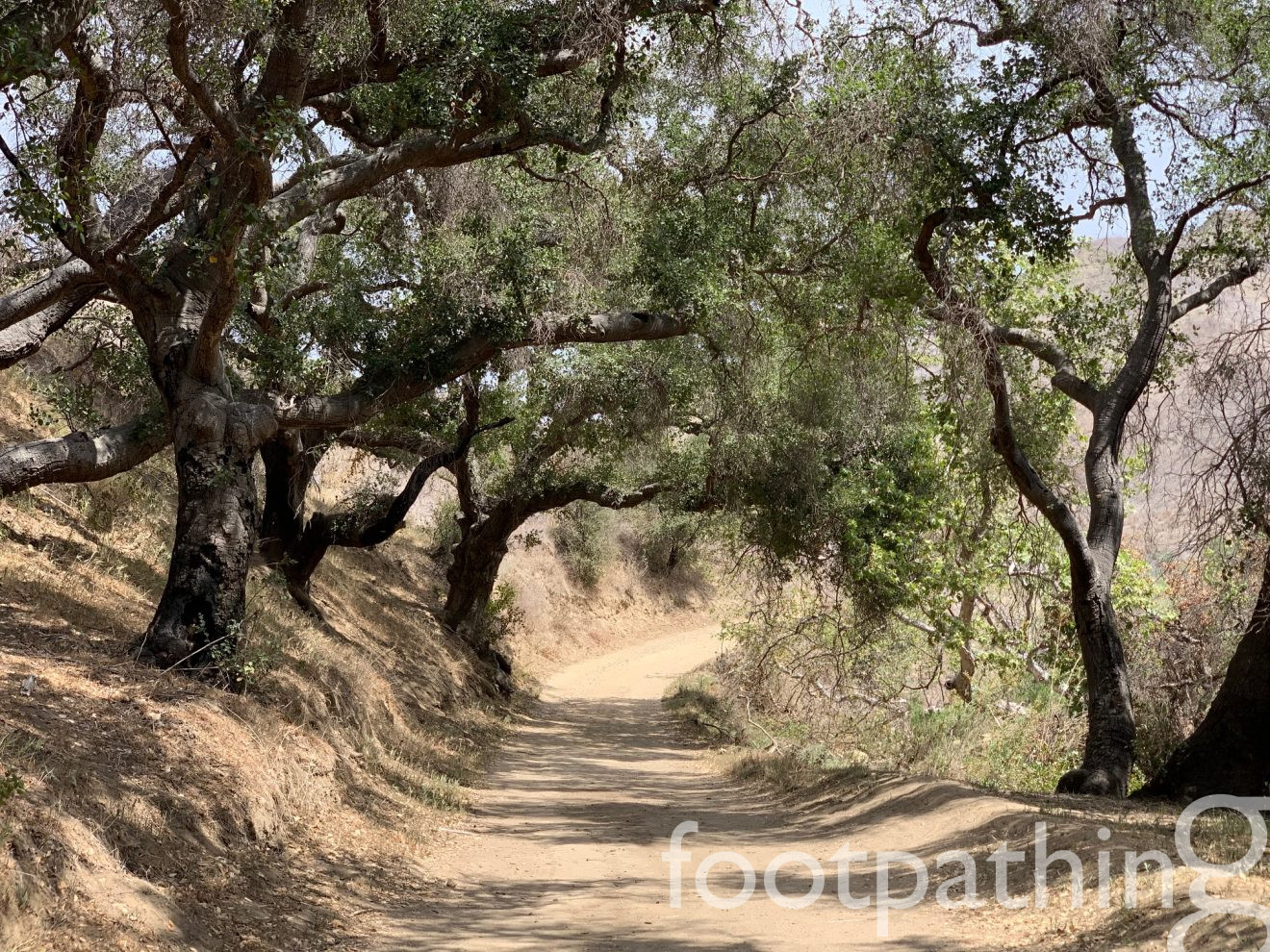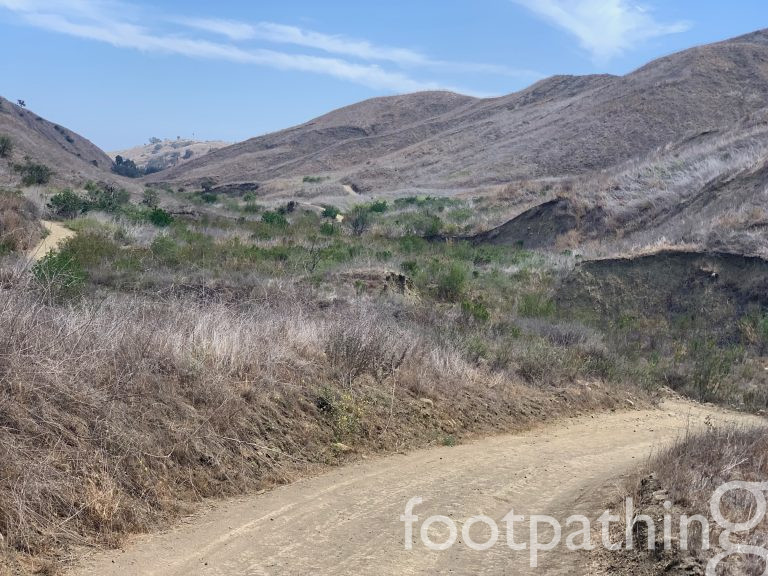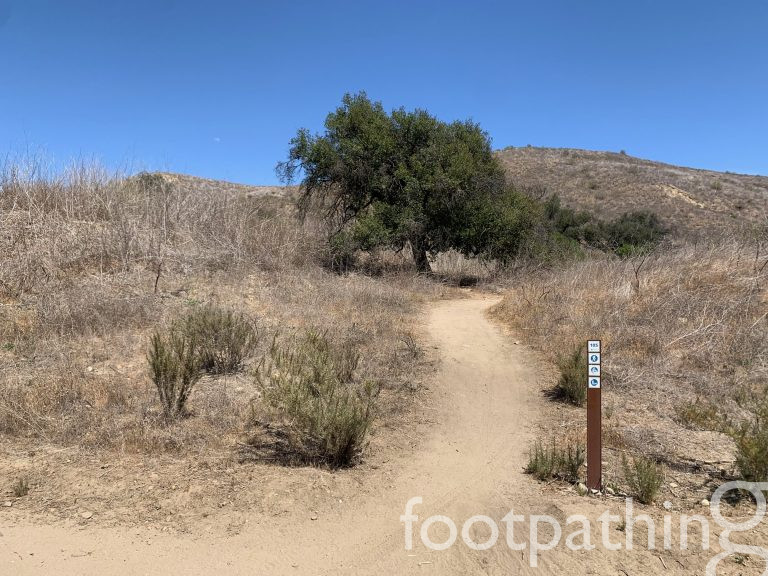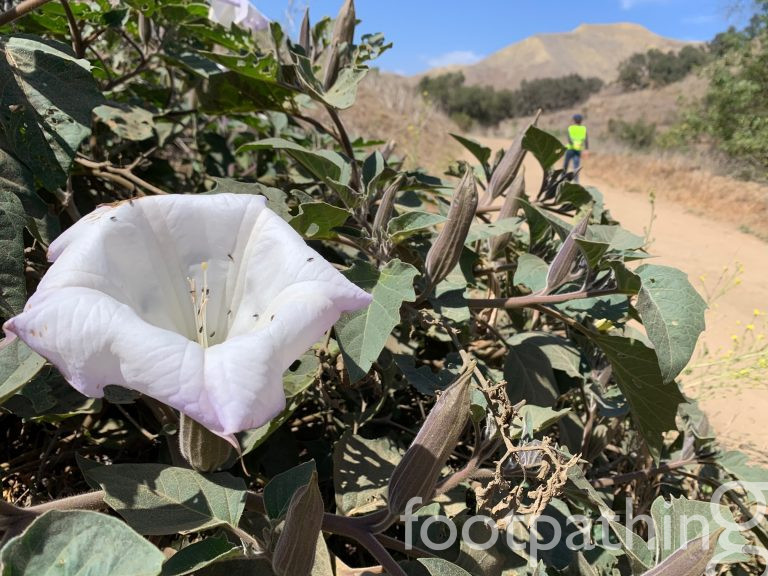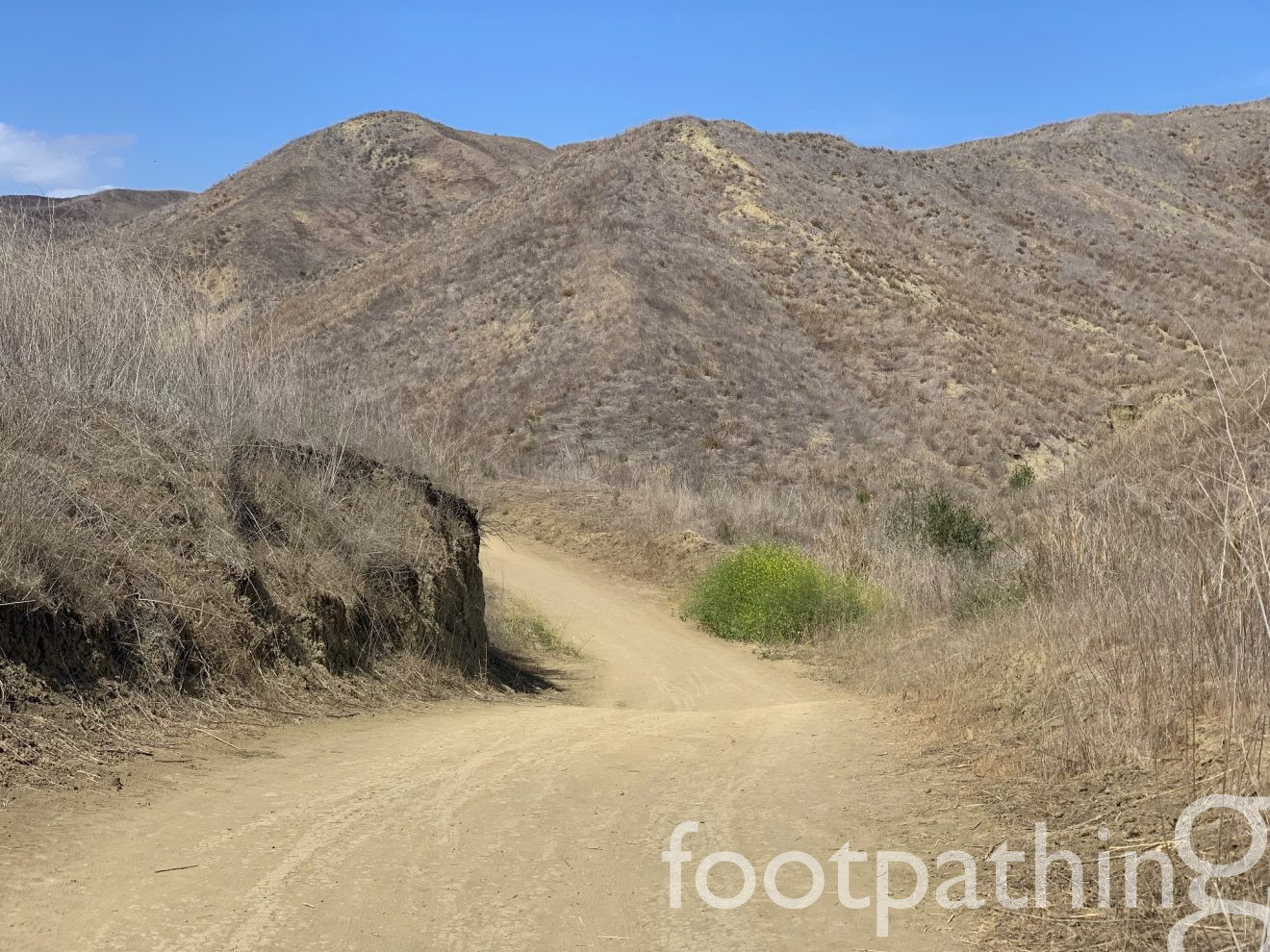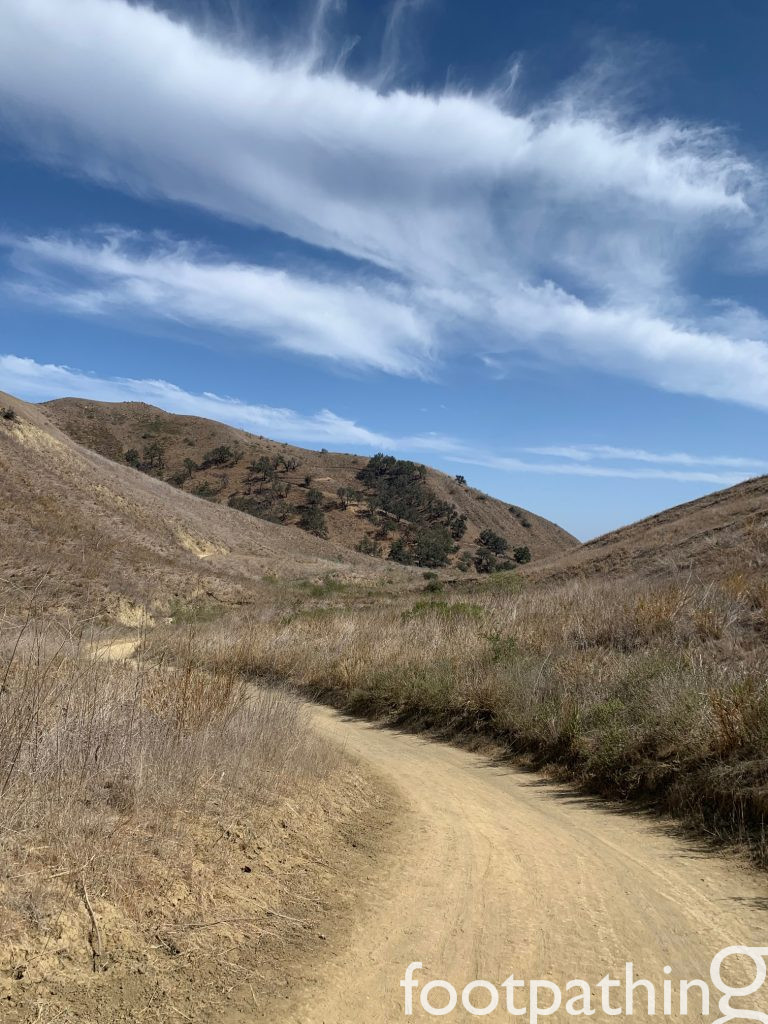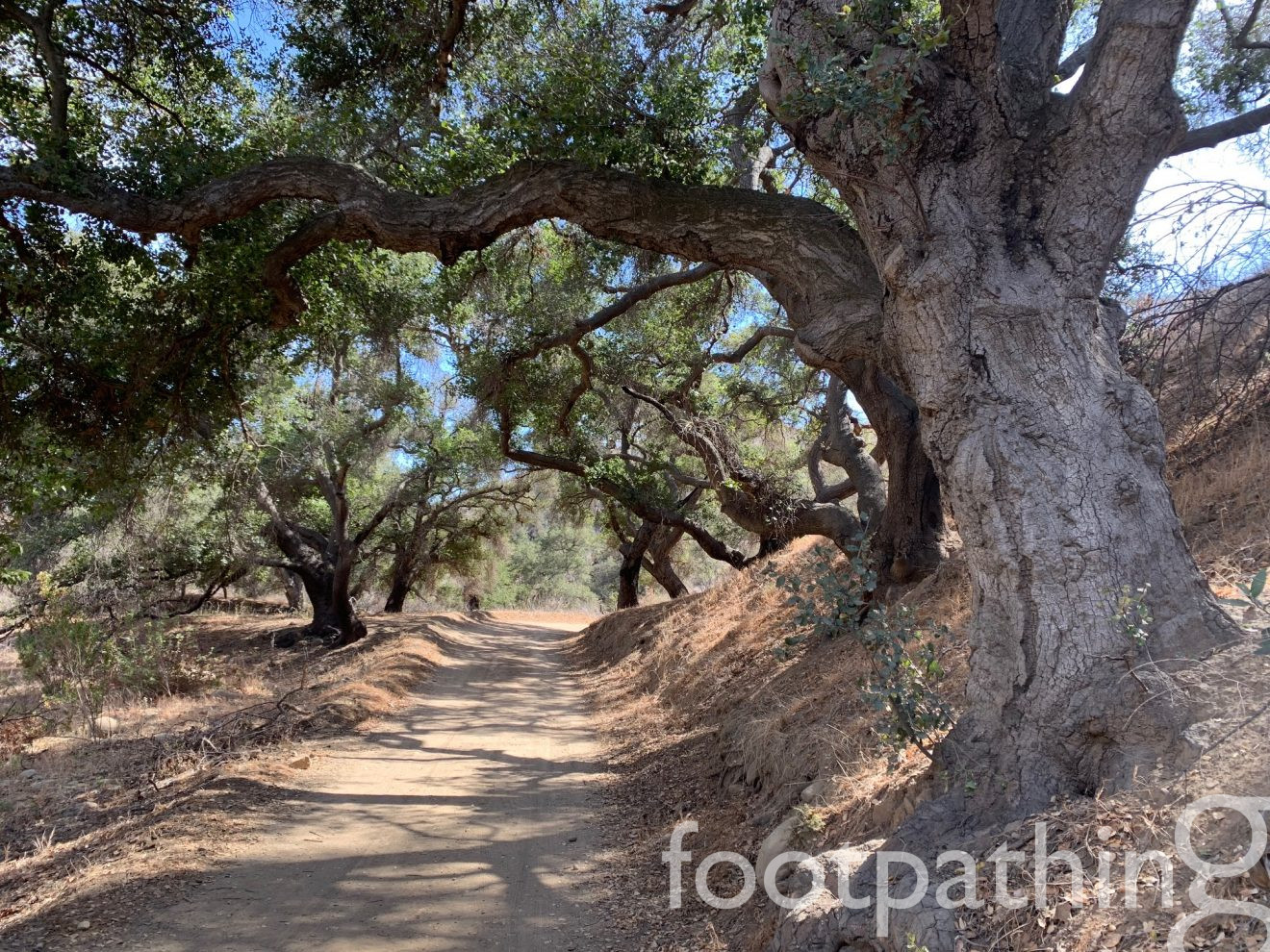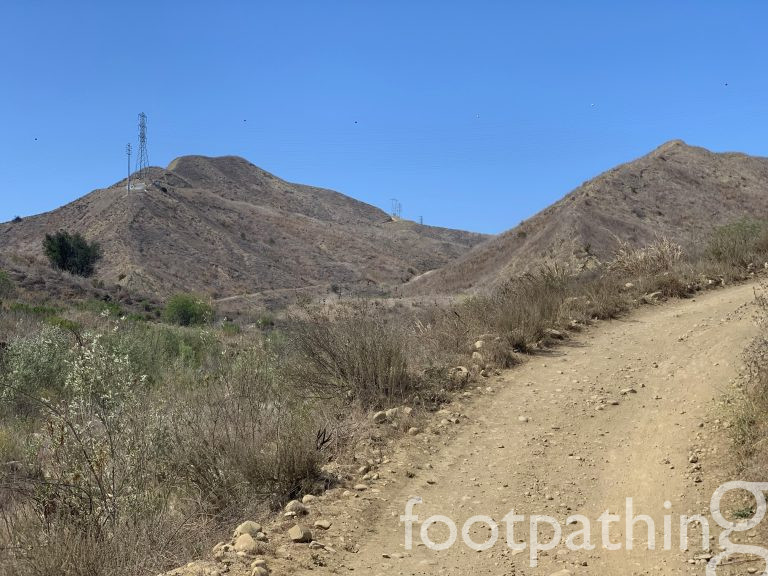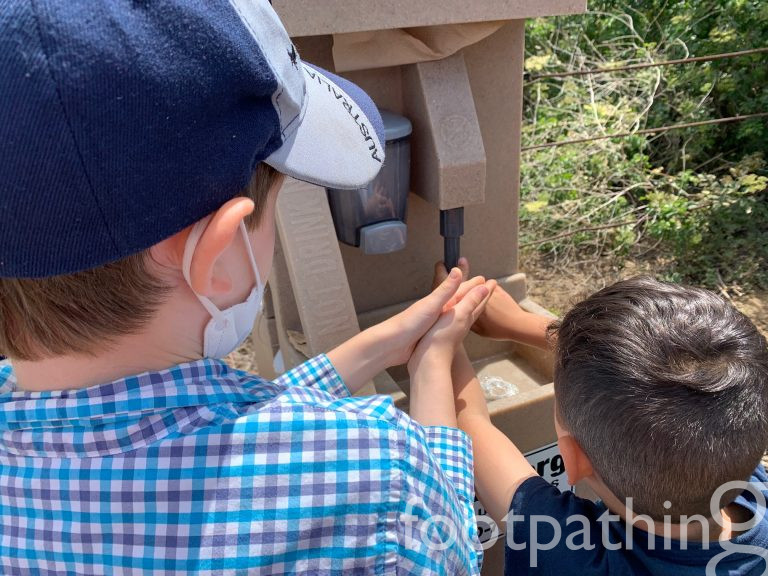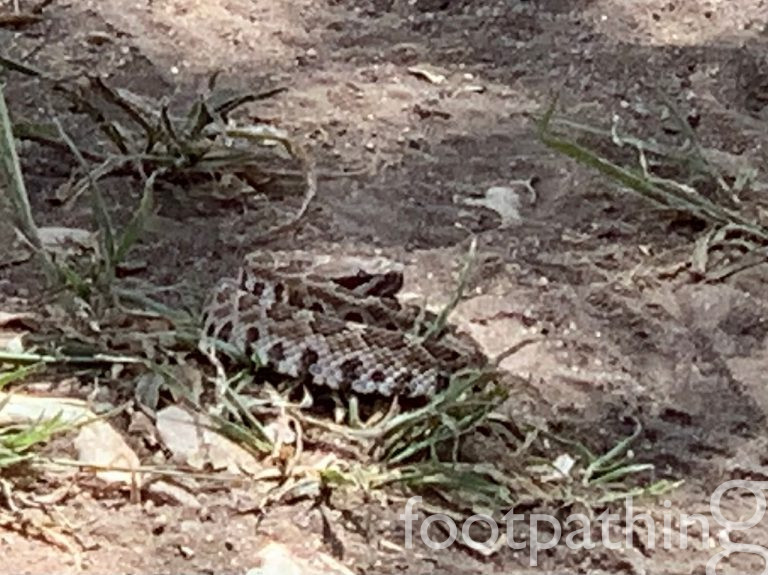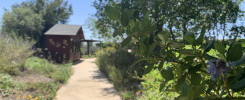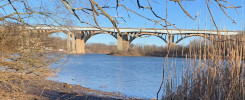A fire road forges the main path through Harmon Canyon, alongside and across the creek to a lookout, ostensibly 3.5 miles in – and up. But we got happily distracted sidetracking along the off-shoot trails winding up and down the hillsides. Whereas the main trail is broad and sun drenched, side trails amble through the shade of oak groves that form sculptures and archways. For younger kids, a rusty old Jeep toward the beginning of the trail and a tractor a bit further along make for excellent clambering. Shortly before and just at the tractor, little paths veer to the left, past a pretty bench and mini cliff, respectively. Both are great trails for shorter legs, with lot’s to see along the way including birds nesting in the cliff walls.
Ventura Land Trust, caretakers of the trail, have thought of pretty much everything. Trails are carefully tended, with explicit signage indicating where trails do – or don’t – go. Dogs are permitted on portions of trails and prohibited in sensitive habitat areas, also clearly posted. Bells are a required safety measure for bikes – and available on loan at the trail head. There is also a bike pump, hand washing station and portable restroom.
INCIDENTALLY:
We came across a young rattlesnake on one trail that led us down a rabbit hole of safety-related questions – which turned into our Rattlesnake Safety Q & A at the bottom of this page….
Tons of parking – and spills onto the road and nearby Kimball Road on weekends.
RATTLESNAKE SAFETY Q & A:
Q: When are you most likely to see a rattlesnake on a trail?
A: in the mornings and early evenings, warming up – they spend the hottest part of the day sheltered.
Q: Will they attack if they see you?
A: they’re likely to detect you and disappear before you see them. They only bite as a last resort. Of the rare occurrence of snake bites, 70% happen on the hands of males in their teens and twenties – suggesting the snake may have been defending itself.
Q: If you encounter one, what should you do?
A: don’t approach it, don’t attempt to run past or jump over it – wait for it to retreat before continuing. If you accidentally get close enough to threaten it, you may or may not hear it rattle and see it coil up. If that happens, slowly retreat. Rattlesnakes would rather not bite you.
Q: How far can they strike?
A: 1/2 to 3/4 their body’s length.
Q: Are baby rattlesnake dangerous?
A: YES! Their venom is arguably more poisonous than that of adults, but they are not as effective at delivering it.
Q: What should you do if you’re bitten by a snake?
A: to keep the venom from circulating through your body: stay calm, expend as little energy as possible, and keep the wound below the level of your heart. Remove rings, watches or anything else constricting. Call 911 or get to an emergency unit within 30 minutes and do your best to describe the snake to make sure you receive the right antivenom.




